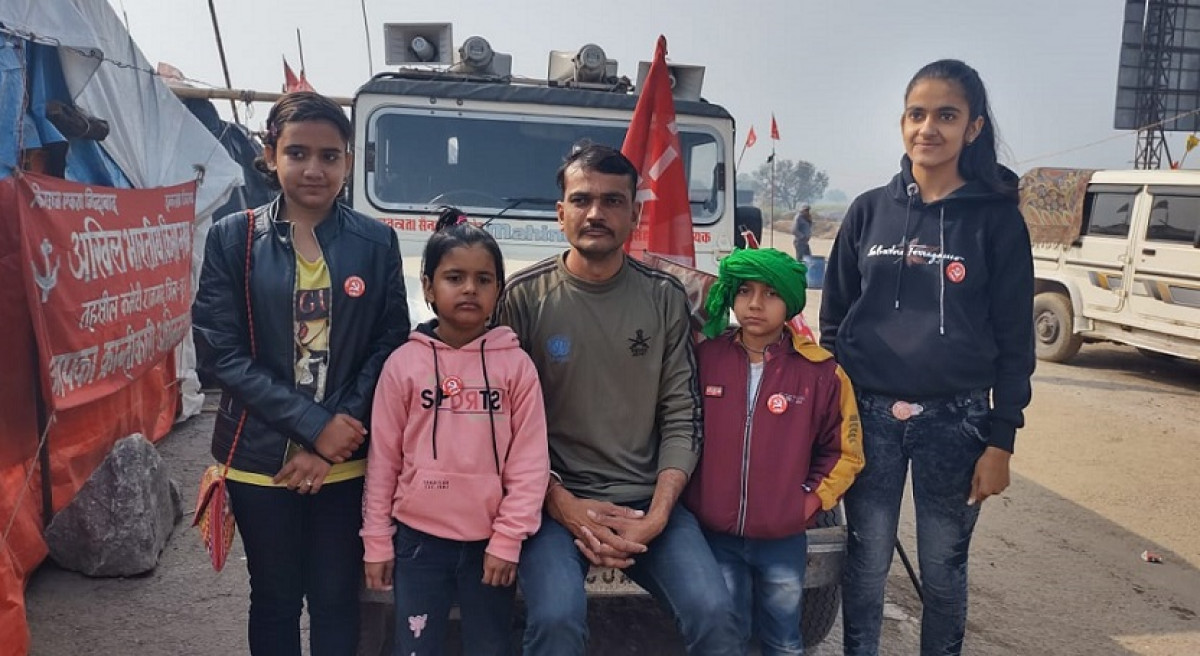India
En route Delhi, Kasturabai resolves to continue fighting for her land
Kasturabai is one of the 1,300 protesting women farmers from Maharashtra who are joining the Kisan Andolan in Delhi.

“The last time we went to protest, my husband died because of jaundice. This time even if I die in Delhi, I will be happy if my children get something from this protest,” Kasturabai Balu Surale, 65, said with a smile on her face when she was asked about the chilling temperatures and pollution of Delhi and how would she deal with it.
Kasturabai is from a small village Surwali Budruk from Bhodwal Taluka of Jalgaon, Maharashtra. She works as a landless labourer in other people’s fields and has been fighting for her land since 1982. “A. R. Antulay was the chief minister at that time, we had protested throughout Jalgaon and were put in jail for a month,” she said while proudly showing her Lok Sangharsh Morcha’s badge.
Tens of thousands of farmers are protesting at three different sites along the borders of Delhi, the national capital, against the three farm laws pushed through by the central government in September last year. To express their support and also solidarity, especially in the light of the recent remarks of Chief Justice of India suggesting that women, along with elderly and children, should not participate in the protests, on January 15th and January 16th, about 1,300 farmers, mostly women, boarded a train from Satara and Jalgaon to participate in the jatha going all the way to Delhi. Kasturabai is one of the 1,300 protesting women farmers from Maharashtra who are joining the Kisan Andolan in Delhi.
She works as a landless labourer in fields of cotton, Jawhar, Chawali, Mug and Udid according to the seasons. “We are daily wage labourers; a male labourer gets Rs 200 a day and we women get only Rs 100. My entire family is dependent on it, since my husband’s death. It’s not at all enough.”
Kasturabai had earlier also participated in the Kisan Long March in 2018. She was amongst thousands of others who marched from Nashik to Mumbai demanding land rights under the Forest Rights Act. Most of the protesting farmers belonged to Scheduled Tribe and Scheduled Caste communities. The then chief minister of Maharashtra, Devendra Fadanvis of the Bharatiya Janata Party (BJP), had promised that protesting farmers will get land rights.
However, Kasturabai has not received the ‘Saat Baara’ (Land- Ownership proof) of her land yet. “Girish Mahajan and Devendra Fadanvis had promised us land after Kisan Long March but only some of the adivasis from Nashik have received it, the rest are still landless. I have two daughters, one of whom is a widow, she stays with me and works as a labourer, she has two kids as well. On top of that because of the Coronavirus pandemic, our wages were cut to half. It’s really unfortunate that we have to spend our entire life fighting for our very own land, but we won’t stop, this fight is about our existence” she said.
Umaji Uttam Bhilla, another villager from Muktad village in Bhodwal taluka, Jalgaon district is joining the protest to demand land rights under the Forest Rights act as well. “I have been farming in Borgaon-Shivar since 2003. On January 3rd this year, the forest department came and destroyed our huts, yield, and threatened us with arrests,” he says with tears in his eyes. “I have plantations of Cotton, Mango, Lemon, Custard Apples, but they (forest department) destroyed everything, they had pistols, they even took our identification papers.” Umaji belongs to the Bhilla community which is categorised as a Scheduled Tribe.
Umaji and Kasturabai are both a part of the ‘jatha’ from Jalgaon with around 1,300 protesting farmers, most of whom are landless labourers with a similar plight. As the weather starts getting colder at the junction of Bina in Madhya Pradesh, Kasturabai covers herself with a blanket and poses for a photo, much to the delight of the entire train compartment.





